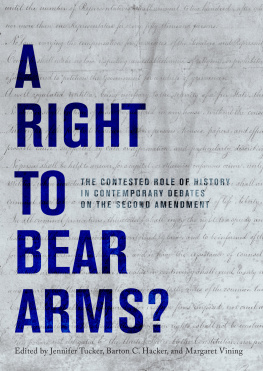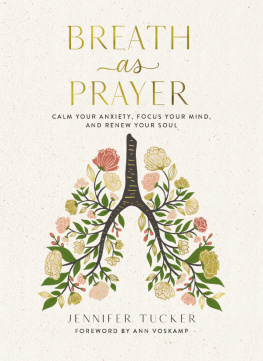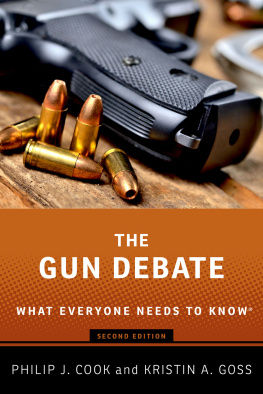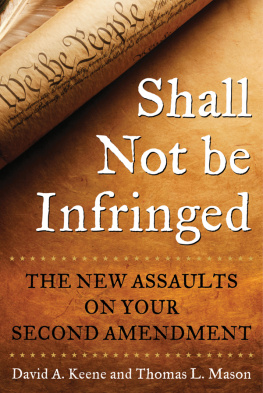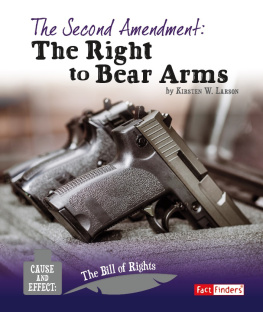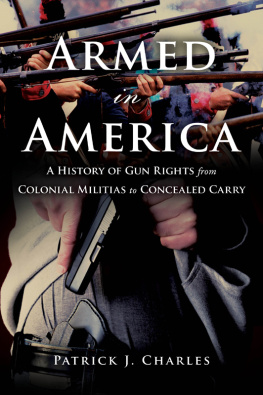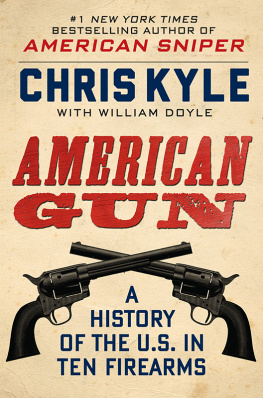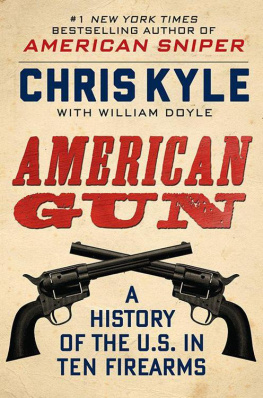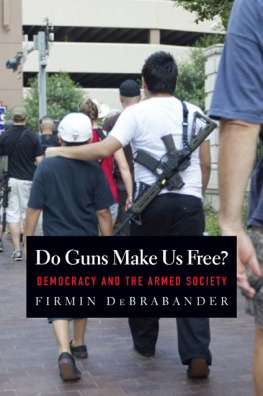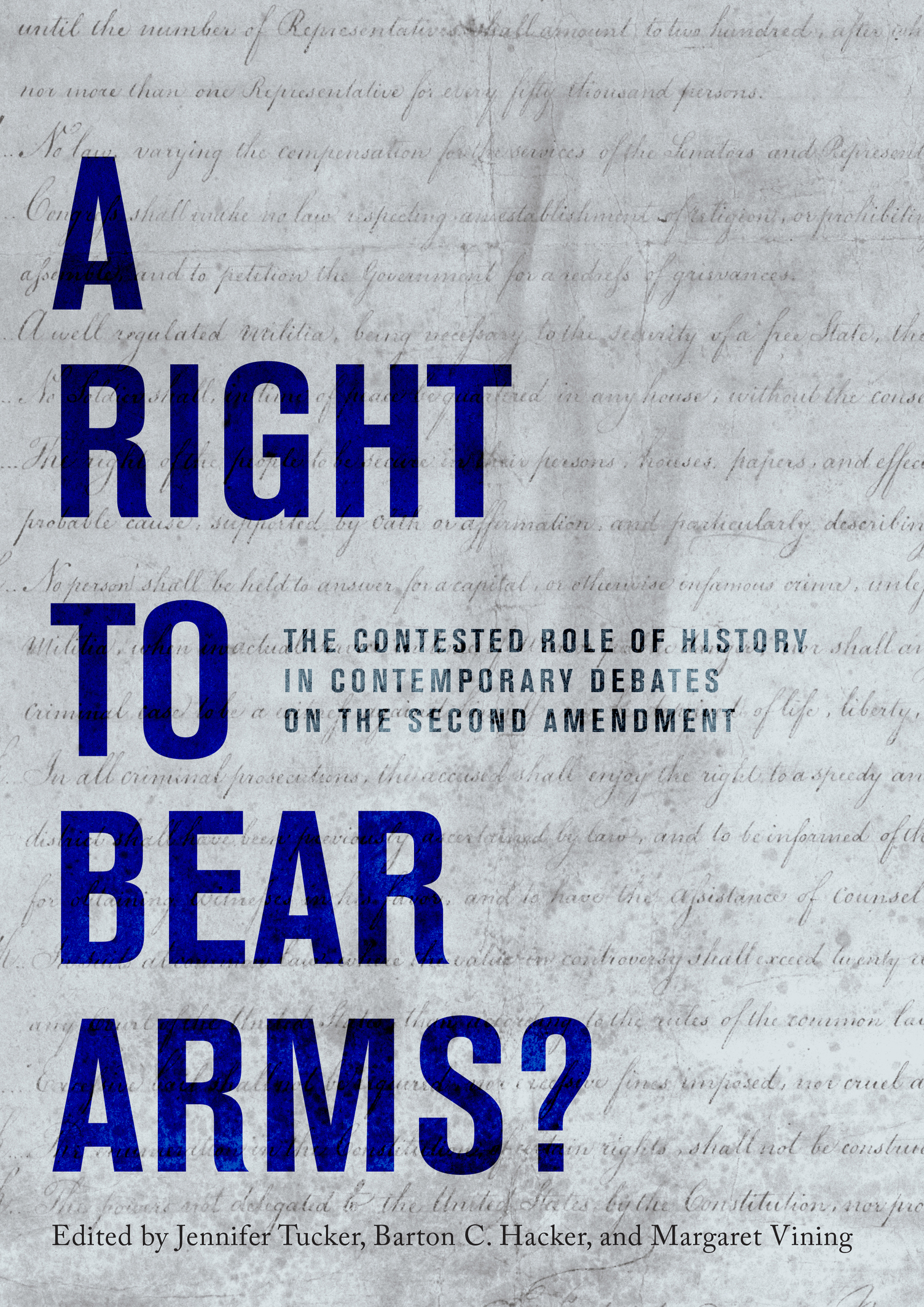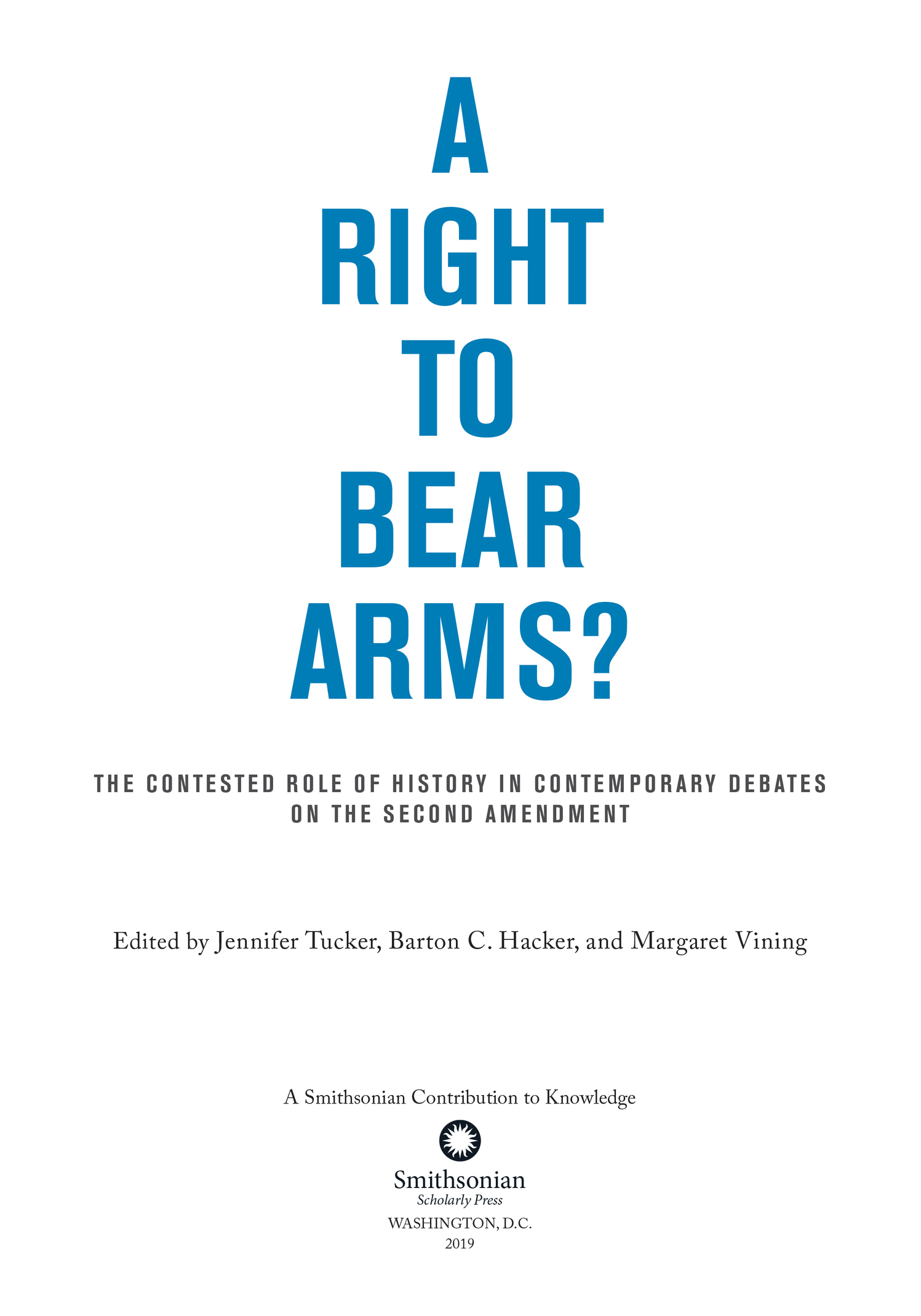Contents
Landmarks
Print Page List
Published by
SMITHSONIAN INSTITUTION SCHOLARLY PRESS
P.O. Box 37012, MRC 957
Washington, D.C. 20013-7012
https://scholarlypress.si.edu
Compilation copyright 2019 by Smithsonian Institution
All rights reserved. This publication may not be reproduced, stored in a retrieval system, or transmitted in any form or by any means, electronic, mechanical, photocopying, recording, or otherwise, without the prior permission of the publisher.
Library of Congress Cataloging-in-Publication Data
Names: Tucker, Jennifer, 1965 editor. | Hacker, Barton C., 1935 editor. | Vining, Margaret, editor. | Smithsonian Institution Scholarly Press, publisher.
Title: A right to bear arms? : the contested role of history in contemporary debates on the Second Amendment / edited by Jennifer Tucker, Barton C. Hacker, and Margaret Vining.
Other titles: Contested role of history in contemporary debates on the Second Amendment
Description: Washington, D.C. : Smithsonian Institution Scholarly Press, 2019. | Series: A Smithsonian Contribution to Knowledge | Includes bibliographical references and index. | Smithsonian Institution compilation copyright 2019
Identifiers: LCCN 2018058276 (print) | LCCN 2018058928 (ebook) | ISBN 9781944466268 (E-book) | ISBN 9781944466251 | ISBN 9781944466251(hardcover) | ISBN 1944466258(hardcover) | ISBN 9781944466268(ebook)
Subjects: LCSH: FirearmsLaw and legislationUnited States. | United States. Constitution. 2nd AmendmentHistory. | Gun controlUnited StatesHistory. | Gun controlGreat BritainHistory.
Classification: LCC KF3941 (ebook) | LCC KF3941 .R543 2019 (print) | DDC 344.730533dc23 | SUDOC SI 1.60:R 44
LC record available at https://lccn.loc.gov/2018058276
ISBN:9781944466251 (print)
Ebook ISBN9781944466268
A full subject index is included in the print edition.
v5.4
a
Contents
Jennifer Tucker
Tim Harris
Priya Satia
Kevin M. Sweeney
Saul Cornell
Jonathan S. Ferguson
Randolph Roth
Lois G. Schwoerer
Joyce Lee Malcolm
Patrick J. Charles
Stephen P. Halbrook
Mark Anthony Frassetto
Figures
Advertisement for the Rapid-Fire Daisy Pump Gun from the Daisy Manufacturing Co., Plymouth, Michigan
Examples of eighteenth-century bullets chewed before firing, from the site of Fort Ticonderoga
The British .303 rifle cartridge showing (left to right) a bullet of Mk. II Special (Dum Dum) pattern with a soft lead point; the original Mk. II bullet with enclosed jacket; and (to the right of the cartridge case) an original Mk. IV bullet with hollow point
A contemporary .40 S&W pistol cartridge with fully expanded jacketed hollow-point (JSP) bullet
A forensic wound profile illustrating the unintended tumbling/fragmenting effect of the original M193 5.56 mm bullet (1963)
State-level data on homicides and suicides with firearms, 19992005
State-level data on Firearms Kept in or around Home, 2001
Tables
Percentages of probate inventories of English male decedents with firearm and types of firearm found in inventories, 15611750
Percentages of probate inventories of English male decedents of differing economic status containing firearms in selected periods, 16011750
Percentages of probate inventories of English male decedents of differing social status and occupations containing firearms in selected periods, 16011750
Militia training and arming in Gloucester, 1608
Percentages of probate inventories of colonial male decedents containing firearms by region and over time, 16331800
Percentages of probate inventories of colonial male decedents of differing economic status containing firearms in selected periods, 16351750
Condition of colonial militias in 17541756
State militia returns in 1802 and 1803
Introduction
Jennifer Tucker
Beyond the communities of legal specialists, historians, and activists, many people today may not be aware of the extent to which history itself has become contested ground in the debate about firearms and the interpretation of the Second Amendment to the Constitution of the United States. Proposed in 1789 and ratified in 1791, the Second Amendment states, A well regulated Militia, being necessary to the security of a free State, the right of the people to keep and bear Arms, shall not be infringed.
This book aims to provide general readers who are not familiar with this subject a glimpse into how and why historical arguments have been marshaled on both sides of todays debate over the Second Amendment. It includes writings by leading historians on firearms and the common law and by lawyers who have served as historical consultants in litigation for both sides. Taken together, these essays offer both general readers and specialists a valuable study of how history itself has become a contested site within the wider national legal debate about firearms. Constitutional historians have debated how intimately the right to arms was tied to service in a well-regulated militia, while social scientists have debated the links between access to firearms and injury or death, whether by homicide, suicide, or accident. This book explores these and other controversies from various perspectives.
The book seeks to fill a lacuna in public historical writing about firearms and the law, a field characterized by strong polarities and in which scholarly exchanges among people with different perspectives on the history of firearms are relatively rare. The subject of firearms possession and use is one of the most divisive issues the country now faces. The history of the use and regulation of firearms is playing an unprecedented role in litigation challenging firearms laws across the country. Firearms are of concern in the United States both for advocates of greater regulation and for those who advocate expanded gun-ownership rights. The availability of firearms is also demonstrably entwined with a broader history of gun violence in the country, with the most recent studies showing that among developed nations, the United States is distinctively deadly, witnessing roughly thirty-two thousand deaths per year in gun-related homicides, suicides, and accidental shootings. On average, around eighty-seven people nationwide die daily from gun injuries (roughly the equivalent of one jumbo jet or two regular airplanes crashing every week). The United States stands out among other nations with respect to daily lethal firearm violence; it has the highest rate of gun-related deaths among industrialized countries, with more than 30,000 fatalities annually. There are signs that people across the political divide are concerned about reducing gun-related mortality (including, for example, the lethality of guns when used against community members, for example, in cases of rage).
Yet to date, however, research on gun violence has been limited because funding for research on the impact of firearms on society is surprisingly scant. In October 2005, a Republican-majority Congress passed a law that largely exempts firearms from federal consumer-safety laws, providing gun manufacturers and dealers with immunity from liability lawsuits. The bill was intended to block lawsuits by individuals and municipalities seeking to hold gun manufacturers and dealers liable for negligence when their weapons were used in crimes. Not only are firearms manufacturers protected from liability, they are also shielded from the production of new evidence about the harmful impacts that firearms impose on society. Since 1996, the Centers for Disease Control and Prevention (CDC) has been effectively barred from funding research into the causes of firearm-related deaths after Republican representative Jay Dickey led an effort to strip $2.6 million from the CDCs budget that was allotted for gun research the previous year. As the 1996 congressional appropriations bill stipulated, none of the funds made available for injury prevention and control at the Centers for Disease Control and Prevention may be used to advocate or promote gun control. Comparable admonitions against generating data from research that might be used to reduce smoking or avoid unhealthy diets are nowhere to be found. One consequence of this state of affairs for researchers is that studies that could fund ways to improve the safety of firearms, or even to document their instances and effects, are in short supply.

